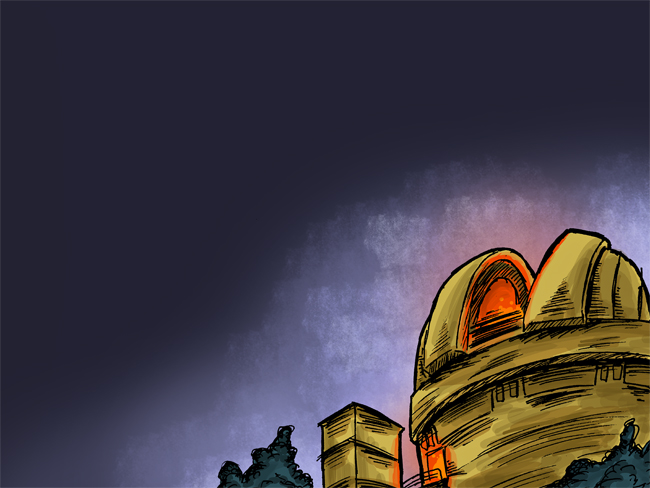The stars in West Texas are now competing with the glow from oil drilling rigs and gas flares in the Permian Basin, the largest oil field in the state.
UT’s McDonald Observatory teamed up with Pioneer Energy Services to address the issue of light pollution interfering with the observatory’s research abilities. Last September, the two groups published a report on good light practices, including shielding light fixtures so that the glare does not face skyward.
Oil rigs line the northeast horizon of the observatory, and light fixtures illuminate their activity 24/7. High oil and gas prices initiated the increased construction of oil rigs in West Texas’ Permian Basin during the early part of the 2010s, said Stacy Locke, CEO of Pioneer Energy Services.
“If you go look at the price of oil and the rig count in the U.S., the Permian Basin had explosive growth starting from 2010 and then into 2012 to 2014 because the worldwide demand for oil really increased, which caused oil prices to shoot up,” Locke said. “As the oil price rose, the rig count rose with it.”
Observatory spokesman Bill Wren said he began noticing the additional light clouding the observatory in 2010.
“We have data going back to 2009 that shows the sky brightening before you could really see it visually,” Wren said. “It corresponds to the boom in oil and gas exploration around the Permian Basin. For decades, the brightest artificial source of light we could see was the combined lights of El Paso and Ciudad Juárez — 160 miles off west. Now it’s safe to say our northeast horizon [is the brightest].”
The oil companies are willing to help with reducing light pollution, Locke said.
“Once we proved we could make a drilling rig dark-sky compliant, we went out with Bill Wren, and I introduced him to a number of our oil and gas clients and explained to them this concern,” Locke said. “Once they became aware of the issues, they were willing and wanting to help fix the problem.”
The observatory is in the process of a $30 million upgrade to the Hobby-Eberly Telescope to study dark energy — an unknown force accelerating the expansion of the universe — but light pollution might thwart its efforts. Astronomy senior research scientist Matthew Shetrone said despite the telescope upgrade, light pollution might inhibit astronomers’ ability to study dark energy.
“In order to study dark energy, we need to be able to detect galaxies so faint they can not be detected from imaging from the ground,” Shetrone said. “We will be using spectrography. There may be 30 photons we detect from that very, very distant galaxy, maybe 30 billion light years away. … So if we have a brighter sky because of light pollution, that adds noise to the 30 photons we want to collect from a distant galaxy and can get washed out.”





















